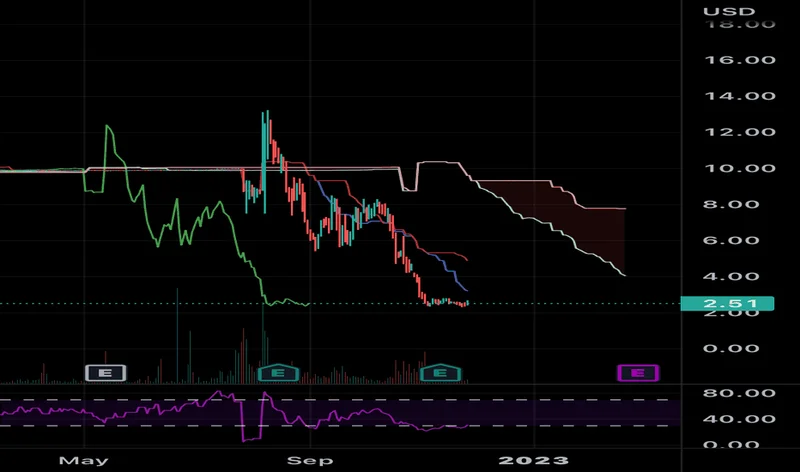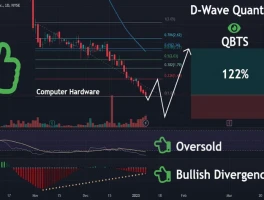So, D-Wave is at it again.
Another quarter, another press release promising the quantum revolution is just around the corner. I swear, my inbox is a graveyard of these things. "Breakthrough," "paradigm shift," "next-generation." It’s a game of corporate buzzword bingo, and this time, D-Wave just yelled "House!" with the launch of its Advantage2 system.
They’re slinging around some impressive-sounding numbers: double the coherence, 40% more energy, more connections between qubits than a LinkedIn power-user. It’s all very shiny. It’s designed to make you feel like the future is being assembled in a lab somewhere in British Columbia, and you’re lucky enough to be getting a sneak peek.
But let's be real. This is the same playbook we’ve seen a thousand times. It’s the tech industry’s version of a magic trick. They distract you with the flashy specs—the what—so you don’t ask the really uncomfortable questions about the why and the when. Why does this matter right now? And when will it do something that my laptop, or even a decent cloud server, can't already handle for a fraction of the cost and headache?
The Spec Sheet Seduction
Look, I get it. Progress is incremental. But the way these quantum companies market themselves is anything but. They’re not selling a product; they’re selling a lottery ticket. A dream.
The Advantage2 is a perfect example. More power, more connections. Great. This is the quantum equivalent of the megapixel wars from the early 2000s. Remember when camera companies just kept jamming more pixels onto tiny sensors, and the photos actually got worse in low light? It was a numbers game for the marketing department, a way to put a bigger number on the box so you’d pick their camera over the other guy’s. That’s what this feels like. Are we actually getting clearer pictures of reality, or just more noise?
They trot out a proof-of-concept with police patrols, claiming a 10-second solve time that "beat expectations." It sounds amazing. No, 'amazing' doesn't cover it—it sounds like a perfectly manicured demo designed for a slide deck. What expectations did it beat? A grizzled police sergeant with a push-pin map and a half-eaten donut? A five-year-old algorithm running on a dusty server in the precinct basement? Without context, the number is meaningless. It’s a data point without a story, and they’re hoping we’re all too dazzled to notice.

Then you have the partnerships. They’ve got a whole roster of big names signing on: GE, Nikon, Sharp. It’s a great look, offcourse. But what are these "engagements"? Are these multi-million dollar contracts for mission-critical operations, or are they glorified science fairs where the big companies get to dip a toe in the "quantum" water for some good PR and a tax write-off? The details, as always, are conveniently vague. They want you to see the logos, not the fine print on the invoice.
Follow the Money, Not the Qubits
If you want to understand what’s really going on, ignore the qubits and look at the cash. D-Wave just closed a $400 million at-the-market equity offering. Four. Hundred. Million. Dollars.
That, right there, is the engine. That’s the fuel for this whole operation. The press releases, the NASA partnerships, the flashy demos—it’s all part of the grand performance needed to keep the capital flowing. They’re not just building quantum annealers; they’re building a narrative. A story compelling enough to convince Wall Street to keep writing checks.
Slapping the NASA logo on your work is the oldest trick in the book. They "demonstrated" some interconnects between chips with the Jet Propulsion Laboratory. It’s a step on their "roadmap" to a mythical 100,000-qubit machine. It sounds like they’re one breakthrough away from calculating warp-drive trajectories. But a lab demonstration is a million miles from a commercial product. They’re building a rocket ship, and they’re showing us a new type of screw they invented for it, and we’re all supposed to act like we’re ready for liftoff.
This ain't a charity, and it ain't pure science. It’s a business, and it's competing in a brutal market where hype is currency. While D-Wave is making noise, its competitor IonQ is out buying up other companies to bolster its own tech. It’s an arms race, and the primary weapon is the press release. They have to keep feeding the beast, promising a bigger, better, more revolutionary future, and honestly...
Then again, maybe I'm the crazy one. Maybe I’m just a jaded hack who has seen too many tech messiahs fail to turn water into wine. It’s possible that deep inside that cryogenic chamber, something truly world-changing is humming away. But from out here, it just looks like a whole lot of noise.
Just Another Spin on the Hype Carousel
At the end of the day, D-Wave is playing the game it has to play. The technology is so complex and its real-world application so far off that the only way to survive is to sell the story. They’re selling a future where their machines optimize global supply chains, design miracle drugs, and build unbeatable AI. And it's a hell of a story. The problem is, for now, that’s all it is. The real product they’re moving isn’t quantum computation; it’s D-Wave stock (QBTS). And for a lot of people, that’s probably enough.

